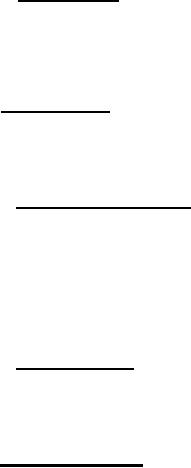 |
|||
|
|
|||
| ||||||||||
|
|  MIL-S-85018A(AS)
contractor's efforts to improve the equipment, the equipment parts, the equip-
ment workmanship, etc, so that the entire compilation will show other than a
rejection decision. For the Production Acceptance Phase, Test Level E shall be
used, except that the temperature extremes shall be +55C and -44C, and
vibration shall be .5g. Details of the burn-in tests shall be included in the
test procedures which are submitted and approved by the procuring activity.
4.4.3.3 Test Details - The test details such as the length of the test
cycle, the length of the heat portion of the cycle, the performance character-
istics to be measured, special failure criteria, preventive maintenance to be
allowed during the test, etc, shall be part of the test procedures to be sub-
mitted and approved by the procuring activity prior to the beginning of the
Reliability Assurance Tests.
4.4.4 Special Tests - Special tests shall be conducted for the purpose of
checking the effect of any design or material change on the performance of the
equipment and to assure adequate quality control. The equipment selected for
special tests may be selected from equipments previously subjected to the
sampling or reliability assurance tests.
4.4.4.1 Special Test Schedule - Selection of equipments for special tests
shall be made as follows:
(1) One an early equipment after an engineering or material
change.
(2) Whenever failure reports or other information indicate that
additional tests are required. (This will be determined by the procuring
activity.)
4.4.4.2 Scope of Tests - Special tests shall consist of tests and test
procedures previously approved by the procuring activity. Test procedures
previously approved for the preproduction tests shall be used where applicable.
When not applicable, the contractor shall prepare a test procedure and submit it
to the procuring activity prior to conducting the tests.
4.4.5 Equipment Failure - Should a failure occur during either the
sampling, reliability assurance or special tests, the following action shall be
taken:
(1)
Determine
the
cause
of
failure
(2) Determine if the failure is an isolated case or design defect.
(3) Submit proposed corrective action intended to reduce the
possibility of the same failure(s) occurring in future tests to the procuring
activity for approval.
(4) Where practical, include a test within the individual test to
check all equipment for this requirement until reasonable assurance is obtained
that the defect has been satisfactorily corrected.
38
|
|
Privacy Statement - Press Release - Copyright Information. - Contact Us |